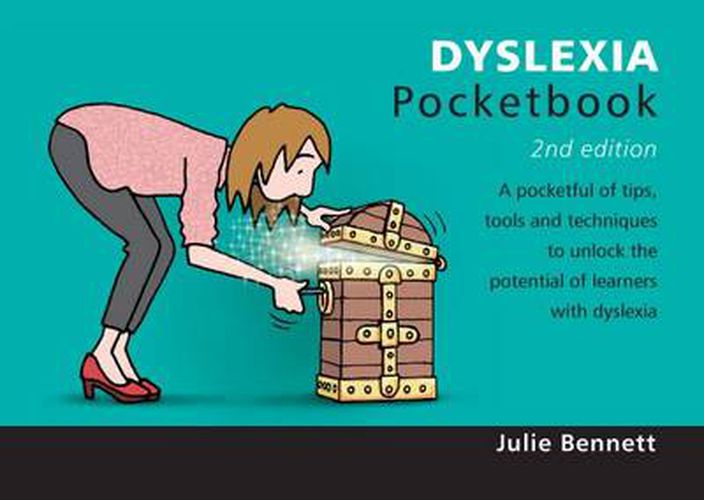Readings Newsletter
Become a Readings Member to make your shopping experience even easier.
Sign in or sign up for free!
You’re not far away from qualifying for FREE standard shipping within Australia
You’ve qualified for FREE standard shipping within Australia
The cart is loading…






The word dyslexia has a Greek origin, dys- meaning difficulty and -lexia meaning words or language. Dyslexia is not just a reading or spelling problem; its a difficulty with language
reading, writing, speaking, spelling and information processing. It can, in turn, lead to social problems. This pocketbook is a practical guide to helping dyslexic students overcome their learning barriers and unlock their potential. It provides an outline of what dyslexia is; ways to recognise at risk signs; information about learning profiles of dyslexic students; suggested solutions; how to improve the performance of dyslexic students and pointers to further resources.
The book starts by defining dyslexia and then moves on to consider the benefits of multi-sensory learning. Practical tools and techniques are provided for reading, handwriting, spelling, maths, speaking & listening, music, study skills and organisation. There are chapters on raising self-esteem and the 6 Ls (legibility, layout, language, links, large picture/little chunks, let it settle & look again) and on the different theories and practices currently in use.
A former primary school teacher, author Julie Bennett has delivered training on dyslexia to a range of professionals, from early years practitioners to Open University staff and students. She has mild dyslexia herself and writes from first-hand experience, drawing on her work with children and adults with specific learning difficulties.
$9.00 standard shipping within Australia
FREE standard shipping within Australia for orders over $100.00
Express & International shipping calculated at checkout
The word dyslexia has a Greek origin, dys- meaning difficulty and -lexia meaning words or language. Dyslexia is not just a reading or spelling problem; its a difficulty with language
reading, writing, speaking, spelling and information processing. It can, in turn, lead to social problems. This pocketbook is a practical guide to helping dyslexic students overcome their learning barriers and unlock their potential. It provides an outline of what dyslexia is; ways to recognise at risk signs; information about learning profiles of dyslexic students; suggested solutions; how to improve the performance of dyslexic students and pointers to further resources.
The book starts by defining dyslexia and then moves on to consider the benefits of multi-sensory learning. Practical tools and techniques are provided for reading, handwriting, spelling, maths, speaking & listening, music, study skills and organisation. There are chapters on raising self-esteem and the 6 Ls (legibility, layout, language, links, large picture/little chunks, let it settle & look again) and on the different theories and practices currently in use.
A former primary school teacher, author Julie Bennett has delivered training on dyslexia to a range of professionals, from early years practitioners to Open University staff and students. She has mild dyslexia herself and writes from first-hand experience, drawing on her work with children and adults with specific learning difficulties.